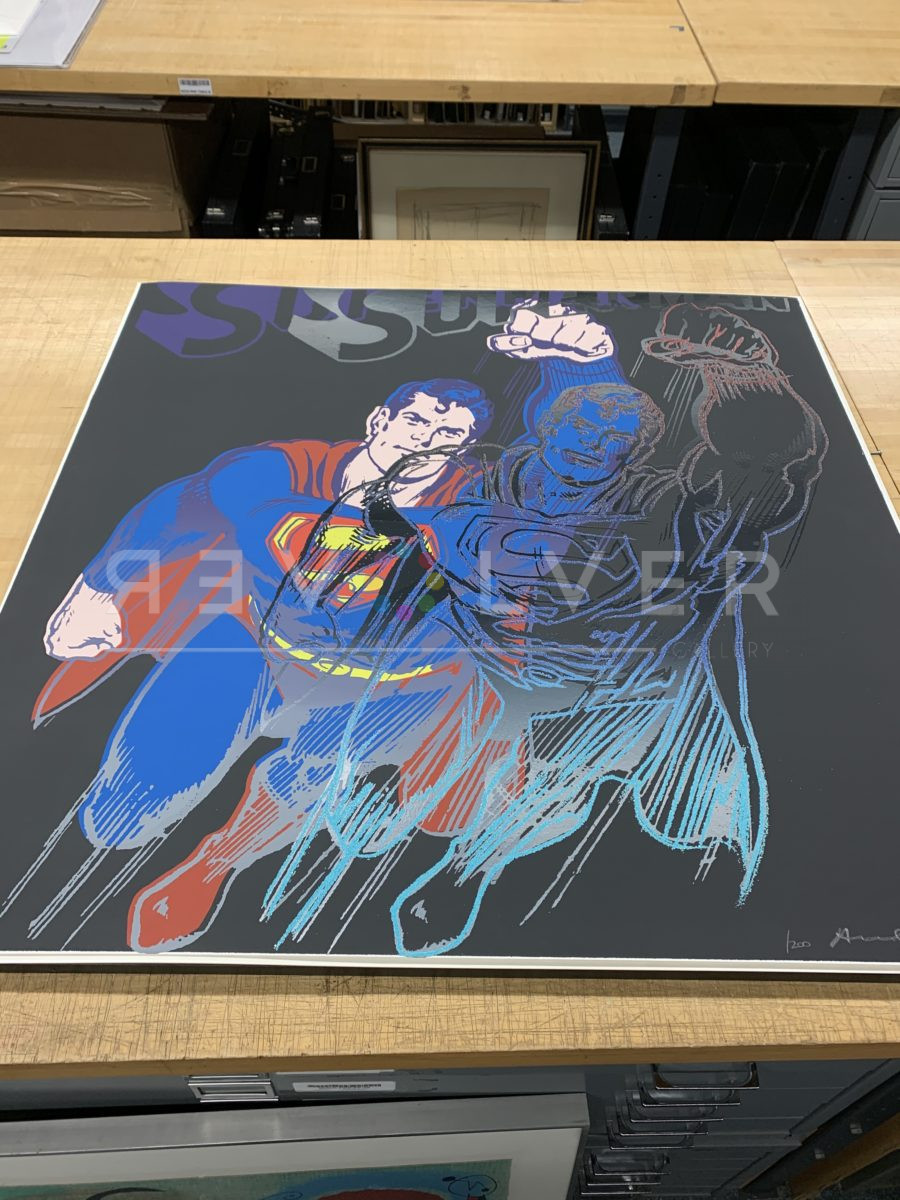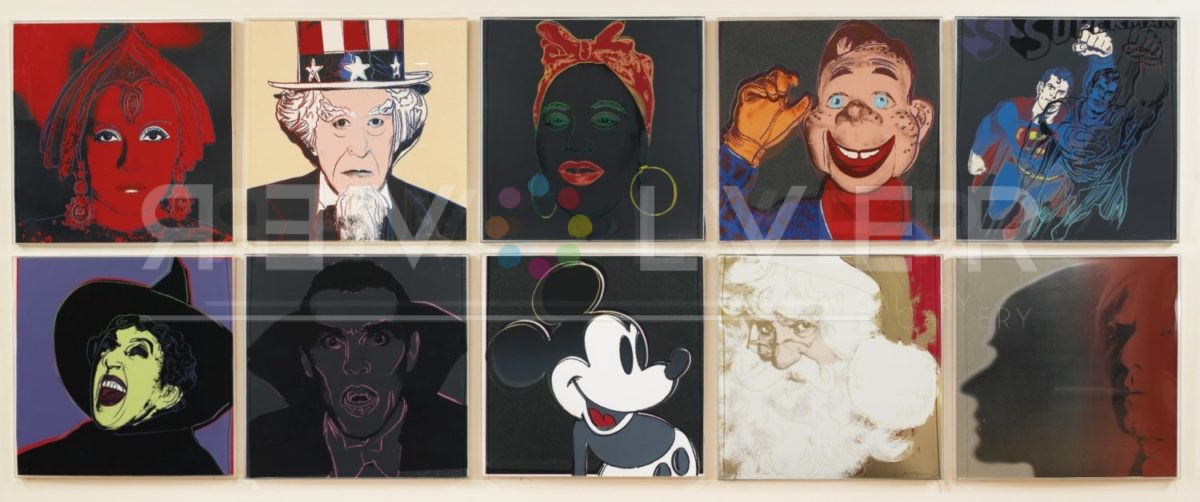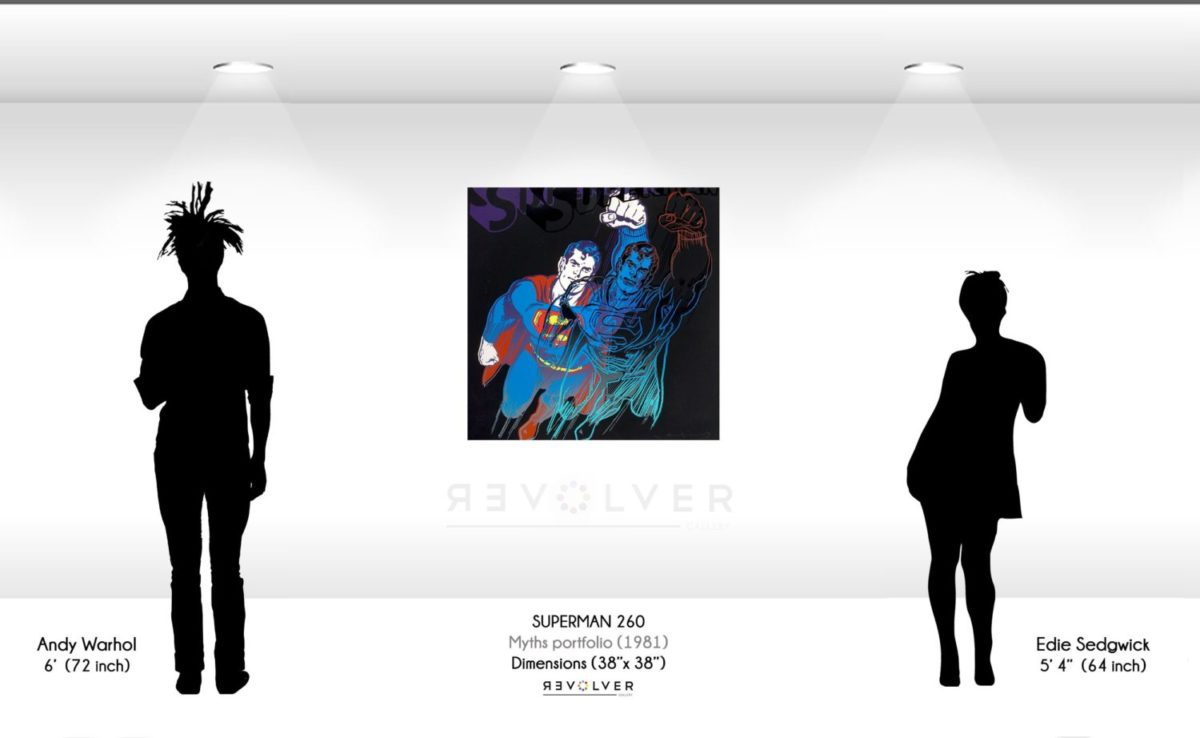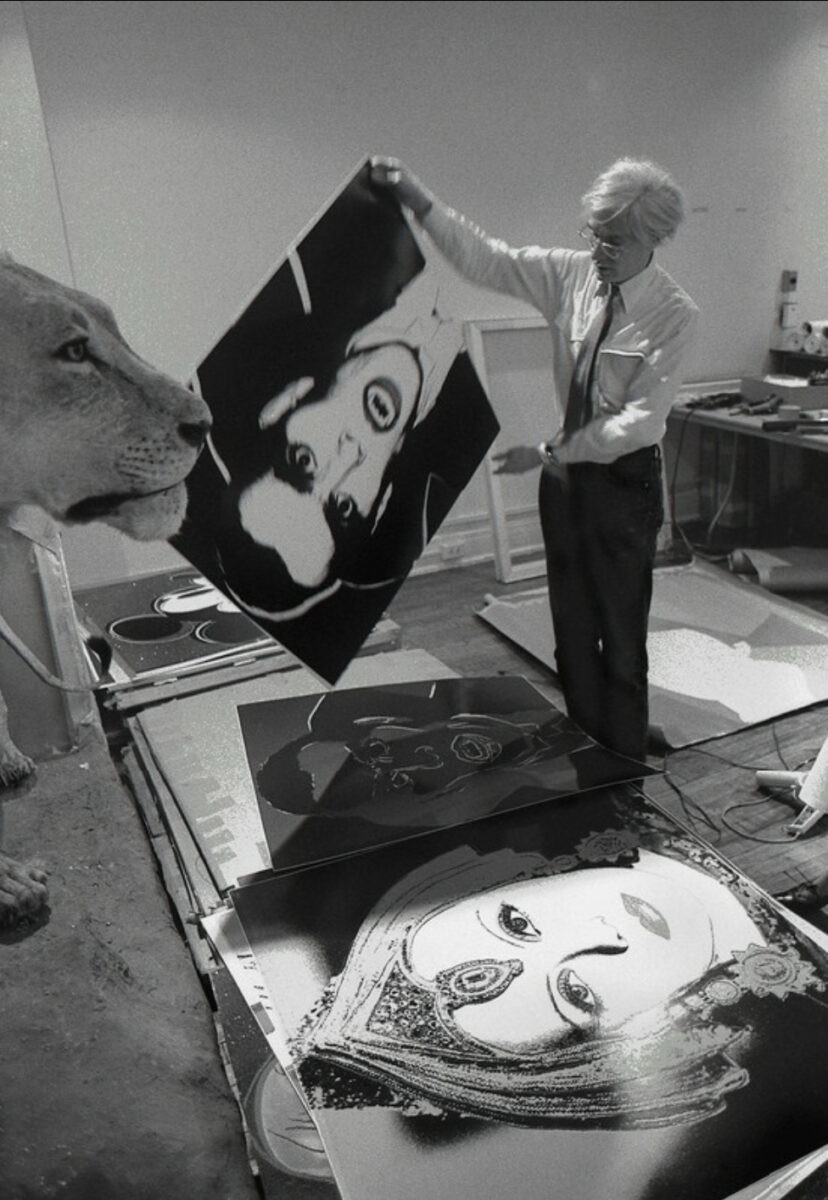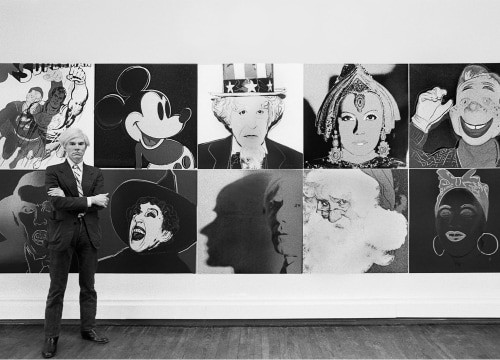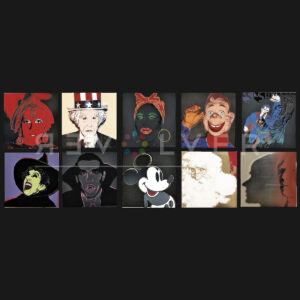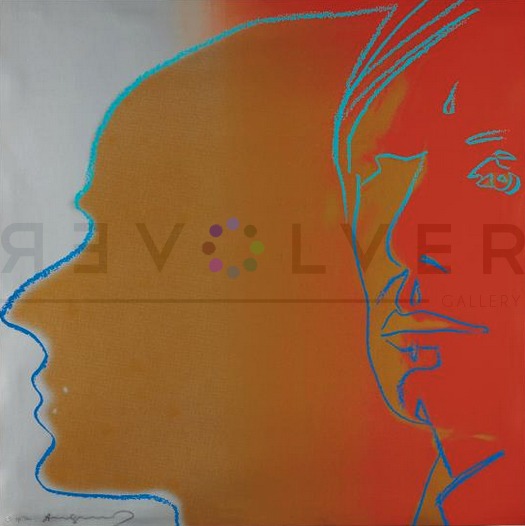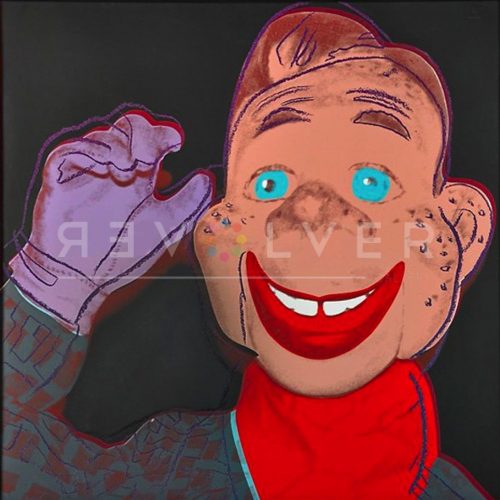Superman 260 by Andy Warhol is one of ten prints from his 1981 Myths portfolio. In this nostalgic series, the titan of Pop art showcases influential figures in accordance with one of his most prominent themes: society’s reverence of celebrities. However, departing from the predictable roster of celebrities, Warhol reconsiders the concept of fame by choosing to represent mythical figures that have achieved legendary status in American culture, reminding us that imaginary cultural icons can be just as influential as real people.
Having developed his own mythic notoriety from his background in commercial art, Warhol exhibited an insightful understanding of the inherent likeness between brands, fabled personas, and ordinary celebrities, acknowledging their seamless fusion within the fabric of commercial culture, effectively marketing themselves. Author Greg Metcalf echoes this sentiment by identifying a common thread among the Myths subjects: “Through these portraits, Warhol both documented and encouraged the collapse of separation between individual, logo and myth. The celebrity is no longer an individual, but a brand name, a logo” (from Heroes, Myth, and Cultural Icons).
Superman 260 captures The Man of Steel in all his glory—mid-ascension, with his fist stretched proudly toward the sky and his cape blazing behind him like flames from a rocket. Superman’s vibrant blues and reds jump out against the black background, enhanced by darker tones further emphasizing the hero’s muscular physique. Warhol amplifies the traditional image by duplicating the figure and superimposing a second version using lighter gestural lines, which he often adds as a means of accentuating the subjects of his original photographs, as can be seen in both his Love and Ladies and Gentlemen series. In the Superman print, Warhol’s elevates the hero’s allure even further with his screen printing process, exuding an exciting quality akin to a marquis movie poster (or a comic).
Superman has since become a universal symbol for goodness, truth, justice, and hope. Moreover, his position as a cultural icon is undoubtedly associated with American idealism. Artistically informed by his upbringing as a first-generation American to Carpatho-Rusyn immigrants, Warhol’s interpretations of American culture represent a distinct perspective. Fed by the fascination of the glamorous tale of the American dream and the Post-War hunger for a new industrial age, Warhol translated his own associations with The Land of Dreams into his art, starting with Campbell’s Soup and Brillo Boxes and venturing into Myths, a manifestation of some of the most recognizable images in American Pop culture through his eyes. In Superman 260, Warhol captures an exhilaratingly nostalgic embodiment of heroic values, fostering a sense of connection and familiarity for people everywhere.
Prints from the Myths collection re-situate our perception of 20th century cultural trends, while also placing the enigmatic artist in a more vulnerable light. Each print is said to reveal distinct facets of Warhol’s personality. As for Superman 260, Warhol suffered from an immobilizing illness as a child. His debilitating ailments, anxieties, and insecurities rendered him weak and frail and confined in his home for months. Reading comic books to pass the time, he found comfort in Clark Kent, a mega-powerful supernatural being moonlighting as a mild-mannered news reporter. Like many children, Warhol imagined himself in the shoes of his favorite comic book heroes, scaling buildings, shooting webs, and defending mankind against all manner of threats. Andy Warhol’s Superman depicts a larger-than-life hero, and it also humanizes the artist, subtly reminding us of the difficulties he faced throughout his life.


